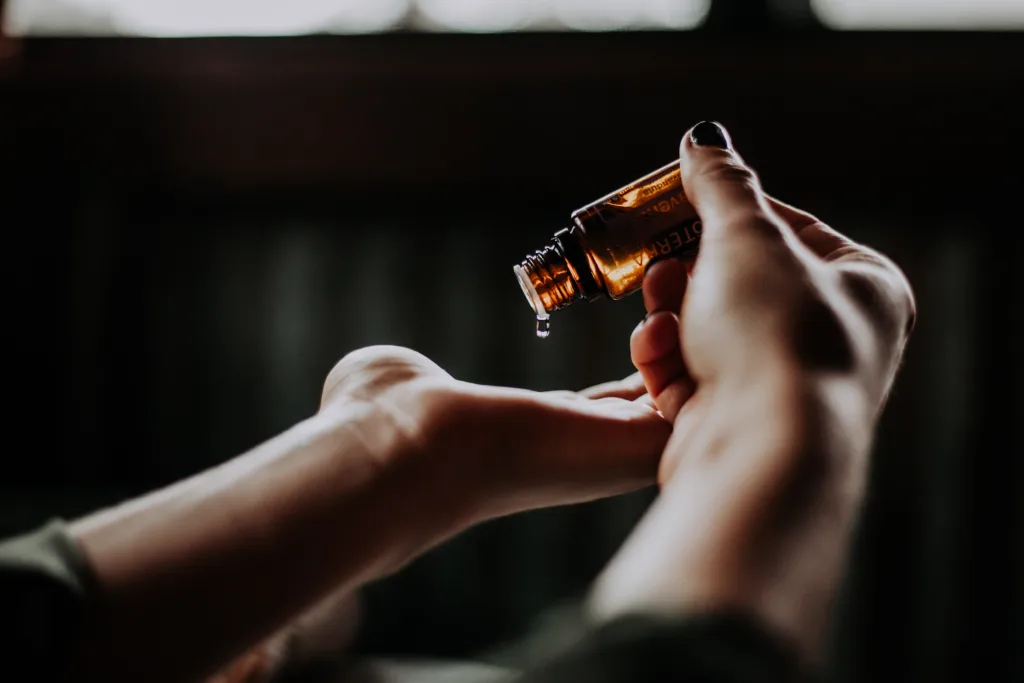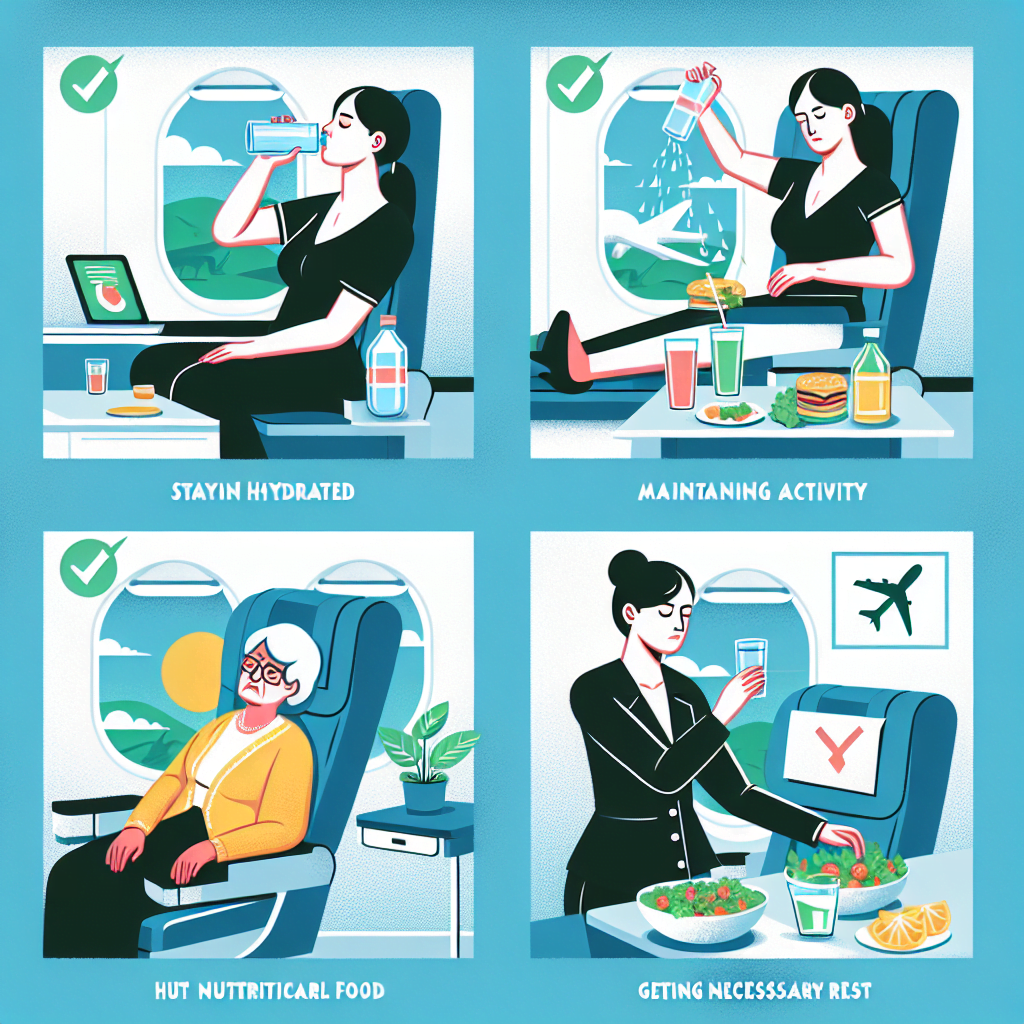If you’ve found yourself asking, “How do I stay healthy during long flights?” fret not, because we’ve got you covered! Long flights can take a toll on your body, leaving you feeling tired, dehydrated, and cramped. But fear not! With a few simple tips and tricks, you can keep your health in check and arrive at your destination feeling refreshed and rejuvenated. So buckle up, sit back, and let us guide you on a journey to staying healthy during those lengthy flights.
Table of Contents
Pre-flight preparations
Before embarking on a long flight, it’s important to take a few pre-flight preparations to ensure your journey is as comfortable and healthy as possible.
Consult with your doctor
It is always a good idea to consult with your doctor before any long flight, especially if you have any pre-existing health conditions or concerns. Your doctor can provide valuable advice and recommendations to help you optimize your health during the flight.
Stay hydrated
One of the most important things to remember during a long flight is to stay hydrated. The low humidity in airplane cabins can easily lead to dehydration, so make sure to drink plenty of water before, during, and after your flight. Avoid excessive consumption of alcohol and caffeine, as they can further dehydrate your body.
Get a good night’s sleep
A good night’s sleep before your flight can make a significant difference in how you feel during the journey. It’s essential to be well-rested, as sleep deprivation can increase the risk of jet lag and negatively affect your overall well-being. Aim for at least 7-8 hours of quality sleep the night before your flight.
Pack your essentials
Pack your carry-on bag with essential items that will contribute to your comfort and well-being during the flight. Include items such as comfortable clothing, snacks, a refillable water bottle, a neck pillow, headphones, and any medications or personal care items you may need. Preparing ahead of time will ensure you have everything you need within reach and make the journey more pleasant.
In-flight exercises
Sitting in a confined space for an extended period of time can make your muscles stiff and increase the risk of developing blood clots. Incorporating in-flight exercises into your routine is crucial to maintaining your physical well-being during the flight.
Stretching
Stretching your muscles regularly can help alleviate tension and promote blood circulation. Simple stretches like reaching for the ceiling, touching your toes, and rotating your ankles can be done discreetly in your seat and help prevent muscle stiffness.
Walking
Whenever possible, take short walks up and down the aisle to stretch your legs and increase blood flow. Walking not only helps prevent blood clots but also helps keep your muscles active and prevents stiffness.
Deep breathing exercises
Deep breathing exercises are a great way to relax and reduce stress during a long flight. Take deep breaths, hold for a few seconds, and then exhale slowly. This can help calm your mind, lower your heart rate, and provide a sense of relaxation.
Seated exercises
If you are unable to walk around, you can still engage in various exercises while seated. Ankle circles, leg lifts, and shoulder rolls are simple yet effective exercises that can keep your muscles active and prevent stiffness.

Eating and drinking
Maintaining a healthy diet and staying properly hydrated during a long flight is instrumental in keeping your body in optimal condition.
Avoid heavy meals
Before and during the flight, it’s best to avoid heavy, greasy meals that can lead to discomfort or indigestion. Opt for light and nutritious food options that are easy to digest, such as salads, fruits, lean proteins, and whole grains.
Choose healthy snacks
Instead of reaching for unhealthy snacks like chips or candy, pack nutritious snacks like nuts, granola bars, or fresh vegetables. These snacks will provide you with sustained energy and nutrients without adding unnecessary calories or sugar.
Drink plenty of water
As mentioned earlier, staying hydrated is crucial during a long flight. Drink water regularly throughout the flight to prevent dehydration. Avoid excessive consumption of sugary drinks or caffeine as they can further dehydrate your body.
Limit alcohol and caffeine intake
While it can be tempting to enjoy a glass of wine or a cup of coffee during the flight, it’s important to limit your alcohol and caffeine intake. Alcohol and caffeine can disrupt your sleep patterns and contribute to dehydration, so moderation is key.
Maintaining good posture
Maintaining good posture during a long flight is essential for preventing discomfort and potential muscle strain.
Sit upright
Sitting upright with your back against the seat can help prevent slouching and keep your spine properly aligned. Avoid slumping or slouching for prolonged periods, as it can lead to back pain and discomfort.
Use a neck pillow
Using a neck pillow can provide support and prevent strain on your neck and upper back. It can also help you maintain a more comfortable and upright posture while resting or sleeping.
Support your lower back
To support your lower back, consider placing a small pillow or a rolled-up blanket behind your lower back. This extra support can help maintain proper alignment and reduce the risk of developing lower back pain.
Consider using an inflatable footrest
Using an inflatable footrest can help elevate your feet slightly, promoting better blood circulation and reducing the risk of swelling or discomfort in your legs and feet. It can also contribute to a more comfortable sitting position.

Preventing deep vein thrombosis (DVT)
Deep vein thrombosis (DVT) is a serious condition that can occur during long flights, where blood clots form in the deep veins of the body, usually in the legs. Taking preventive measures can significantly reduce the risk of DVT.
Wear compression socks
Wearing compression socks can improve blood circulation in your legs and reduce the risk of blood clots. These specialized socks apply gentle pressure to the legs, keeping the blood flowing properly.
Stay active and move around
Sitting for extended periods of time can increase the risk of developing blood clots. Make it a point to get up and move around the cabin whenever possible. Even walking up and down the aisle a few times or doing simple leg exercises can help keep your blood circulating.
Perform leg exercises
While seated, you can perform simple leg exercises to keep your leg muscles engaged and improve blood circulation. Painless exercises like lifting your heels off the floor, flexing your toes, or rotating your ankles clockwise and counterclockwise can be beneficial.
Avoid crossing your legs
Crossing your legs for long periods can impede blood flow and increase the risk of developing blood clots. Instead, keep your feet flat on the floor or use a footrest to keep your legs in a neutral position.
Avoiding jet lag
Jet lag can disrupt your sleep patterns and make you feel fatigued and disoriented. Taking proactive steps can help minimize the effects of jet lag and help you adjust to the new time zone more smoothly.
Adjust your sleep schedule
Prioritize adjusting your sleep schedule a few days before your flight to align with your destination’s time zone. Gradually shifting your sleep and waking times can help your body adjust more easily when you arrive.
Stay hydrated
Staying hydrated is not only crucial for overall health but can also help combat the symptoms of jet lag. Dehydration can exacerbate feelings of fatigue and sluggishness, so make sure to drink plenty of water before, during, and after your flight.
Avoid alcohol and caffeine
While you may be tempted to indulge in alcoholic or caffeinated beverages during your flight, these substances can disrupt your sleep patterns and aggravate jet lag symptoms. Opt for water or herbal teas instead.
Take short naps
If you’re feeling tired during the flight, taking short naps can help you recharge and combat fatigue. Limit your naps to 20-30 minutes to avoid interfering with your sleep schedule upon arrival.

Protecting your immune system
Airplane cabins can be breeding grounds for bacteria and viruses, so taking precautions to protect your immune system is vital.
Wash your hands regularly
Washing your hands frequently with soap and water for at least 20 seconds can help eliminate germs that you may encounter during your journey. Make it a habit to wash your hands after using the bathroom, before eating, and after touching any potentially contaminated surfaces.
Use hand sanitizer
While washing your hands with soap and water should be your primary method, using hand sanitizer with at least 60% alcohol content can serve as a convenient backup option when soap and water are not readily available. Apply a generous amount and rub your hands thoroughly until dry.
Avoid touching your face
Your hands come into contact with many surfaces that may harbor germs. Avoid touching your face, especially your eyes, nose, and mouth, as these are potential entry points for viruses and bacteria.
Consider wearing a face mask
Wearing a face mask can provide an additional layer of protection against airborne germs. It helps prevent respiratory droplets from being inhaled or exhaled, reducing the risk of infection. Make sure to follow the proper guidelines for wearing and disposing of face masks.
Minimizing exposure to germs
Taking steps to minimize your exposure to germs can significantly reduce the risk of falling ill during and after your flight.
Use antibacterial wipes
Wipe down frequently touched surfaces such as tray tables, armrests, and seat belts with antibacterial wipes. These wipes can help eliminate germs and provide you with a cleaner environment.
Avoid using the seat pocket
Seat pockets are often filled with various items left behind by previous passengers and can harbor germs. Avoid using the seat pocket to store personal belongings and keep your items in your bag or under the seat in front of you.
Bring your own blanket and pillow
Airline blankets and pillows may not be thoroughly cleaned between flights, so bringing your own blanket and pillow can provide you with a clean and comfortable option. Ensure that they are easy to wash and dry for hygienic reasons.
Use a personal air vent
Using the personal air vent above your seat can help create a barrier of fresh air around you, reducing the chances of inhaling airborne germs. Direct the airflow slightly downwards and adjust the intensity to your comfort level.

Keeping your mind occupied
Long flights can sometimes feel tedious, but keeping your mind occupied can make the journey more enjoyable and help pass the time.
Read a book or listen to audiobooks
Bring along a book or download audiobooks to keep yourself engaged during the flight. Whether it’s a captivating novel, a motivational self-help book, or an exciting thriller, reading can transport you to a different world and entertain your mind.
Watch movies or TV shows
Many airlines offer in-flight entertainment systems with a wide selection of movies and TV shows. Take advantage of this feature to catch up on the latest releases or binge-watch a series. Grab a pair of headphones for an immersive experience.
Listen to music or podcasts
Create a playlist of your favorite music or explore new genres to keep yourself entertained. If music is not your cup of tea, consider listening to podcasts or educational audio programs that align with your interests. This can be a great opportunity to learn something new or broaden your horizons.
Engage in relaxation techniques
Long flights can sometimes be stressful, so engaging in relaxation techniques can help calm your mind and alleviate anxiety. Techniques such as deep breathing exercises, meditation, or guided imagery can promote relaxation and bring a sense of tranquility amidst the hustle and bustle of air travel.
Recovering after landing
After a long flight, it’s essential to prioritize your recovery and allow your body to adjust to the new environment.
Take a shower
Taking a refreshing shower after landing can help revitalize and rejuvenate your body. It can also help you feel more refreshed and awake after a long journey.
Stretch and move around
Once you’ve disembarked and retrieved your belongings, take some time to stretch and move around. Walk around the airport terminal or find a designated exercise area to stretch your muscles and get your blood flowing.
Adjust your sleep schedule
Upon arrival, adjust your sleep schedule to align with the local time. This will help your body acclimate to the new time zone more smoothly and reduce the effects of jet lag.
Eat nutritious meals
Fuel your body with nutritious meals to replenish any essential nutrients lost during the flight. Choose meals that are balanced and include a mix of fruits, vegetables, lean proteins, and whole grains. This will support your overall well-being and aid in your recovery.
By following these comprehensive tips, you can ensure a healthier and more pleasant experience during long flights. Prioritizing your physical and mental well-being will not only make the journey more enjoyable but also help you arrive at your destination feeling refreshed and ready for new adventures. Safe and happy travels!

